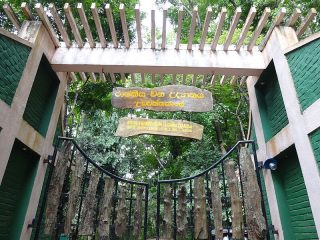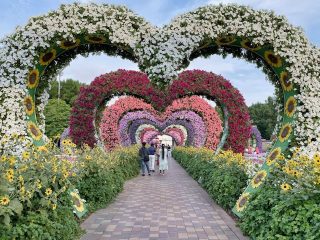Sigiriya also known as the ‘Lion’s Rock’ is an ancient rock fortress and palace located in the District of Matale. The palace, built during the 5th Century BC by King Kasyapa is located at the flat top of a massive rock rising 370 meters above sea level. The terrain below houses an elaborate network of gardens, reservoirs, palatial gates and other structures. It is among the eight World Heritage Sites in Sri Lanka and was declared by UNESCO as the 8th Wonder of the world.
According to local legends, King Kashyapa was the illegitimate son of King Dhatusena. It is said that Kashyapa murdered his father by walling him up alive and usurped the throne which was rightfully the queen’s son, his half brother Mogallana’s. While Mogallana fled to India vowing revenge, Kashyapa fearing his return shifted the capitol of his Kingdom from Anuradhapura to Sigiriya which was previously a monastery. He built his palace of pleasure and secure fortress on the summit of Sigiriya and the grounds surrounding it. During his reign [477–195CE] it was developed further into a complex citadel. Many of the detailed constructions, defensive architecture, decorative gardens and the palatial structure date back to this period. In 495 CE King Kashyapa was defeated by Moggallana who once again moved the capital to Anuradhapura. Subsequently Sigiriya was turned back into a Buddhist mountain monastery.
The top terrace of Sigiriya held the main palace. The mid terrace housed the Lion’s gate, the mirror wall and the famed Sigiriya Frescos. The lower terrace found the impressive moats, walls and intricate garden layouts. The summit of the rock has cisterns that still retain water and it is said that the fountains of the water garden still work in times of heavy rainfall. Archeologists record that an enormous sculpted Lion’s head once lay above the flanking legs and paws at the entrance to the complex.
The famous mirror wall of Sigiriya was named so because of its originally polished surface. It is said that it was polished so well that the King walking by could see his form reflected on its surface. Today it is known for the poems and verses scribbled on its facade by the many visitors to the Lion’s Rock. Even though writing on the wall is banned now, it treasures inscriptions dating back to the 8th century on the various subjects of love, life and irony.
The most celebrated feature of Sigiriya is the renowned frescos. Archeologists believe that the entire face of the rock was a gallery during the reign of King Kashyapa. Voluptuous women, bare-bodied or wearing bodice is depicted holding flowers in delicate feminine posture. Reminiscent of the Ajantha caves of India they are painted in natural shades of red, green and saffron.
The cultural triangle of the Island encompasses five of the eight world heritage sites of Sri Lanka. Sigiriya among them is placed central to most of these important sites and is the perfect place to start your journey. Among the lavish options for accommodation in Sigiriya, providing comfort, tourist facilities and ease of access, is Hotel Sigiriya placed at the heart of the city. It is an exceptional hotel in Sigiriya that will bring you closer to realizing the Lion rock adventure.








